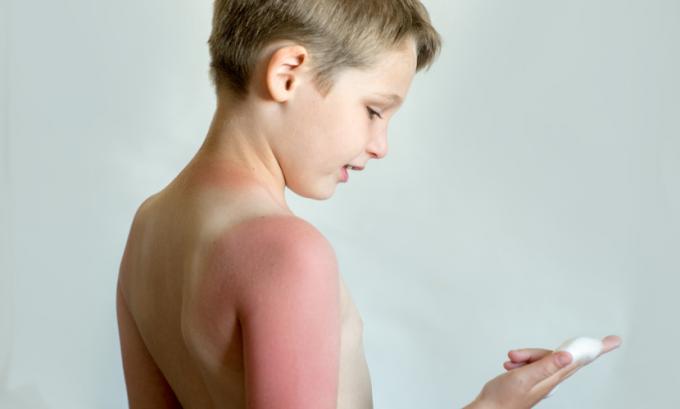We know that the sun exposure is fundamental to our production of vitamin DHowever, excessive exposure and at inappropriate times (between 10 am and 4 pm) can be harmful to our body.
O sunscreen, also called sunblock, It is an important ally to ensure adequate protection, and, contrary to what many people think, it is a product that should be used daily and not just when we go to the beach or club. Next, we'll learn more about sunscreen, how it works in our skin and how it should be used.
What is the function of sunscreen?
Sunscreen is a product that protects our body from damage caused by exposure to sunlight. It prevents, for example, that we get skin burns when we are exposed to solar radiation for a long time. In addition, it prevents damage caused by the sun's rays in the long term, such as photoaging (skin aging due to excessive sun exposure), the appearance of spots on the skin and even O cancer of skin.
Read too: Harmful effects of the sun - burns, dehydration, eye problems etc.
How to use sunscreen?

Many people use sunscreens incorrectly, which leads to skin damage. Who has never met a person who claims to have used sunscreen, but still had burns? This is often related to the fact that people use the protector, but forget, for example, to reapply it, which is an inappropriate form of use.
Read too:Melanin - pigment that gives skin color and protects against ultraviolet rays
THE Brazilian Society of Dermatology points out that sunscreens should be applied 15 min to 30 min before sun exposure, and they must be reapplied, every two or three hours, after a long period in the Water or a lot perspiration. However, it is not enough to just apply the protector at random, it is important to understand the proper amount for each part of the body and the need for uniform application.
The Brazilian Consensus on Photoprotection determines the ideal portion of protector for each part of the body, this rule being known as "teaspoon rule". The indicated quantity, according to it, is:
Face/head/neck: 1 tsp;
Right arm/forearm: 1 tsp;
Left arm/forearm: 1 tsp;
Front and back of torso: 2 tsp;
Right thigh/leg: 2 tsp;
Left thigh/leg: 2 tsp.
Another important point is that sunscreens should be used even on cloudy and cold days. This is due to the fact that the Sun's ultraviolet radiation is able to pass through clouds and can therefore damage our skin.
It is also worth noting that the recommendation of the Brazilian Society of Dermatology is that the sunscreen should present sun protection factor (SPF) 30 or greater.
How to choose sunscreen?
To choose the most suitable sunscreen it is necessary to evaluate some points, it is essential to know your skin type. A person who burns easily should opt for sunscreens with a higher SPF.
It is also important to note which UVA protection the protector checks. A sunscreen must efficiently protect against UVA radiation and also against UVB. UVA radiation is related to skin cancer and photoaging, while UVB is mainly related to burns.

In addition, other precautions must be taken to ensure greater protection to the skin. People with skin that presents acne tendency, for example, should be aware and opt for oil-free products. Those who sweat a lot they should avoid gel sunscreens as they leave the body more easily.
Read too:Myths and Truths About Acne
Should children wear sunscreen?
Children should use sunscreen, however, before six months of age the use of this product is not recommended.. The use of sunscreen for children under six months should only be done when prescribed by a doctor. Above six months of age, sunscreens should be used, being recommended products suitable for children.
It is worth noting that children, as well as adults, should also use mechanical protection, such as hats and clothing, and stay in shaded places to ensure greater protection from the sun's rays.



